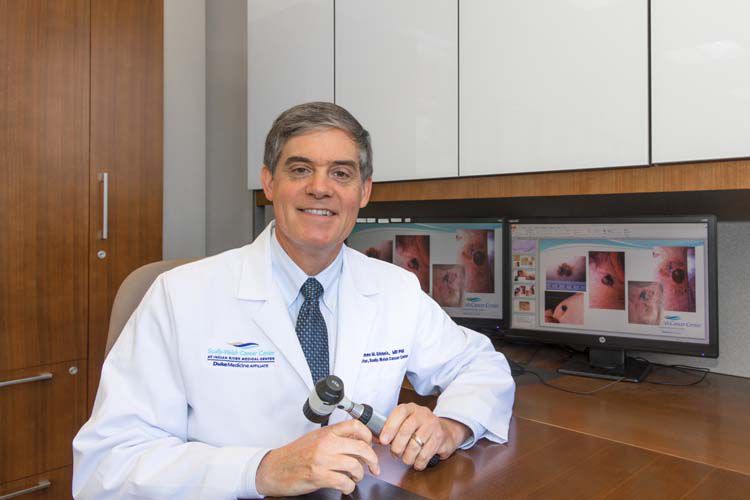
Summer is almost here and the mad dash to the store for sunscreen is about to begin.
Caveat emptor, folks: Not all sunscreens are created equal. And we are not just talking about the sun protection factor – SPF – number.
The Environmental Working Group, a nonprofit, nonpartisan research organization founded in 1992, reviewed some 2,000 sunscreens from over 250 brands and found that 75 percent of them “contained toxic chemicals that can increase your risk of cancer and other health issues.”
A study by U.S. government scientists suggests that retinyl palmitate, a form of vitamin A that is an ingredient in many sunscreens, may speed the development of skin tumors and lesions when applied to the skin in the presence of sunlight, and officials in Germany and Norway have cautioned that retinyl palmitate and other vitamin A ingredients in cosmetics could contribute to vitamin A toxicity due to excessive exposure. Sunscreens that contain oxybenzone, a hormone disrupting chemical, also are suspect.
In any case, aside from dangers posed by specific sunscreen products, Dr. James M. Grichnik, one of the world’s leading melanoma experts, says sunscreen should not be anyone’s first line of defense against skin cancer.
Grichnik, the director of Vero Beach’s Scully-Welsh cancer center, explains: “Let’s start with the data and the data is that ultraviolet light, particularly UVA or UVB, damages DNA and has the capability of driving mutations,” says Grichnik. “These mutations can then go on to cause skin cancer.”
Perhaps surprisingly, the man who earned his medical degree at Harvard, his Ph.D. in cellular biology at Baylor and then went on to groundbreaking melanoma research at both the University of Miami and Duke, actually puts sunscreen on the bottom rung of his three-point skin cancer prevention list.
The Environmental Working Group’s sunscreen information and evaluation page reinforces the point, stating “sunscreen should be your last resort.”
“The first thing,” says Grichnik, “is time of day. Basically, what I think people need to know is that the ultraviolet light during the day is a bell-shaped curve and it’s very high when the sun is right above you in the sky.
“So point one is to try to do your outside activities at the beginning or end of the day. Try to do your indoor activities in the middle of the day. That actually has a huge impact on the amount of mutagenic rays that hit your skin surface.”
Pausing briefly, Grichnik tackles what might be the toughest change he’d like people to adopt.
“The second thing,” he continues, “is clothing. A good tight weave outfit is very effective at blocking ultraviolet light. If you hold it up to the light and you can’t see light through it, it should be an effective sunblock.”
“If you look at the beach 100 years ago,” Grichnik points out, “people weren’t running around half naked. But now we are.” While he knows fashion is against him, he nevertheless notes people would be wise to cover themselves up with loose-fitting clothing at the beach.
Moving on, Grichnik then broaches the topic of sunscreens, SPF ratings and what the savvy consumer be should looking for.
This particular melanoma expert favors the “broad spectrum physical blockers” of UV rays with zinc oxide or titanium dioxide.
“We’ve been putting [zinc oxide] on babies’ behinds for a long time and as far as we’re aware there’s really no major health risks to that product. Likewise, titanium dioxide is also a food whitening agent and so this is something we’ve actually been ingesting and we’re not aware of problems there, either.”
“I also really like the wax-based sunscreens,” Grichnik continues. “They come in these little sticks and they often have titanium and zinc oxide in them. The benefit of the wax is you put it on your forehead, on your face, around your eyes and it’s less likely to get in your eyes or drip off the skin.”
Grichnik also suggests people avoid spray-on sunscreens. “With the sprays, there’ve been some problems with them igniting [and] there have been some burns, but the real issue is that you can inhale them [while they are being sprayed], so there may be some risks with those sunscreens that aren’t fully appreciated. You clearly don’t need sunscreen inside your lungs, so I would prefer to use a product that you’re not going to be inhaling.”
Then there’s the tangle of SPF ratings where, quite frankly, the “math” involved is often fuzzy. At best.
Does a product claiming an SPF of 90 or 100 really protect three or more times better than one with an SPF rating of 30?
Despite what manufactures would like you to think, the answer is no.
A sunscreen with an SPF of 15, according to the Mayo Clinic, blocks about 94 percent of UVB rays. One with an SPF of 30 blocks roughly 97 percent of those same UVB rays. So while 30 is twice as large a number as 15, the difference in their UVB-blocking ability is a paltry 3 percent. And, as WebMD bluntly says, “after that it just gets silly.”
So, think long and hard before reaching for that SPF 100 product.
Grichnik also reminds everyone that applying sunscreen is not a one-and-done precaution. “Keep re-applying it,” he urges.
Finally, Grichnik points back to the Environmental Working Group calling it “an excellent, excellent resource to research sunscreens.”
He highly recommends people go to http://www.ewg.org/sunscreen/ for additional information and warnings. Click on the buttons that say best sunscreens or worst sunscreens to see which specific products are panned or praised.



